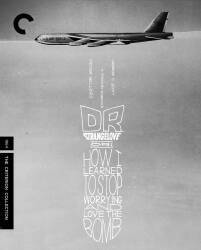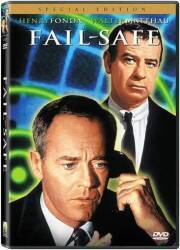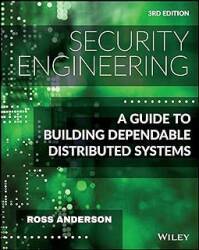
Albuquerque, New Mexico
Returning to Albuquerque
Jump aheadto
Los Alamos
As I mentioned on the
introductory page,
I had visited New Mexico for about two weeks in 1993.
We passed through Albuquerque but didn't spend any time there.
I had returned for three very brief visits
in 2000, 2004, and 2006, to teach one-week classes
for Sandia National Laboratories.
Those visits involved flying in over the weekend
and checking into a hotel that evening.
The next day I would get signed into the facility where the
course would run,
and then unload and connect the equipment,
load the software,
and set up the classroom.
Then, after teaching the course all day through the week,
tearing the equipment down and loading it into the
shipping cases late on Friday.
Early Saturday morning I would fly back.
So, a teaching week would take me to some place,
but I really wouldn't get to see or experience
very much of it at all.
For my return to New Mexico,
Albuquerque was the obvious choice to fly in and out of.
I would stay there for three nights while seeing a few things
there and making day trips to Los Alamos, Valles Caldera,
and the Petroglyph National Monument.
About all that's on this page is about the
National Museum of Nuclear Science and History,
you may want to
jump ahead to Los Alamos.

1:500,000 scale Tactical Pilotage Chart TPC G-19C from the Perry-Castañeda Library Map Collection at the University of Texas at Austin.
The Albuquerque airport is on the south side of the city. It shares runways with Kirtland Air Force Base and is adjacent to Sandia National Laboratories. This is the view to the north in the evening over various Sandia facilities and then Albuquerque.

National Museum of Nuclear Science & History
The National Museum of Nuclear Science and History was established in 1969 on the air force base. The DOE or Department of Energy became responsible for it in 1985, and in 1991 it became affiliated with the Smithsonian Institution.
After September 2001, the public could no longer access it. It was relocated to a former store in Old Town. Right there in the city, it was one of the few things I had time to see during one of my 2000–2006 teaching visits. But it was obviously jammed into what seemed to be a former grocery store on an interim basis.
The new location opened in 2009. It's hard to miss, with a replica of the Trinty test tower, several large bomber aircraft, and a row of missiles.

This B-29 Superfortress belonged to the 509th Bombardment Group based at Roswell Army Airfield. It was one of 65 "Silverplate" B-29s, modified to carry nuclear weapons. The Roswell page has more on the Silverplate program and its airfield, which once was the Strategic Air Command's primary base.

The B-47 Stratojet was used from June 1951 until 1966 as a strategic bomber, and until 1977 in electronic warfare and reconnaissance roles. Its six engines let it cruise at 484 knots, sprint at 527 knots, and climb to 40,500 feet, with a combat range just over 2,000 miles. Its use as a bomber started to be scaled back in 1959 when the B-52 came into service. This specific plane was used to test new fly-by-wire systems.

This B-52 Stratofortress was one of just seven examples of the specific RB-52B-10-BO model. It has dropped more than a dozen live nuclear bombs during the period of above-ground testing. A B-52B first became operational in June 1955. The B-52H model is still in service, they were built in 1961–1963 and thus are significantly older than their crews. The eight engines let it cruise at 442 knots, sprint at 560 knots, and climb to 50,000 feet. With aerial refueling, its range is effectively unlimited.

The collection includes the sail of the USS James K. Polk. It was a nuclear powered submarine built to launch ballistic missiles carrying thermonuclear warheads. It was commissioned in 1966. Then it was converted in 1992–1994 to an attack sub by deactivating the missile tubes and adding Dry Deck Shelters on her upper deck. Then it was decommissioned in 1999 and scrapped in 2000, and its sail was brought to the museum.

Moving inside, there are several sections within the museum. It starts with pre-WWII physics and moves into the Manhattan Project.
The sculptor Jim Sanborn, who created the famous "Kryptos" sculpture at CIA headquarters, created the "Critical Assembly" installation. It re-creates a blend of several different Manhattan Project laboratory environments. Some of the components are original objects from the laboratories, others are identical objects from other settings, and some were fabricated for this exhibit.

The museum has Enrico Fermi's signal generator from his laboratory at the University of Chicago (probably). It covers from 100 kHz to 72 MHz in seven bands.
Enrico Fermi's Instruments
These instruments are believed to be from Enrico Fermi's laboratory during his tenure at the University of Chicago. There Fermi continued his research on nuclear fission that he had begun at Columbia University.
Under Fermi's supervision, the first nuclear chain reaction occurred at the University of Chicago on December 2, 1942. In February, 1943, Fermi moved to the Argonne Laboratory about 20 miles south of Chicago [west, actually].
In August 1944, Fermi moved to Los Alamos. After the war, Fermi taught and conducted research at the Institute for Nuclear Studies at the University of Chicago until his death in 1954. In 1974, the laboratory was renamed in his honor.

The Special Atomic Demolition Munition or SADM was developed in the 1960s. A two-man team would parachute in with this 59-pound device, place it, set a timer, and swim out to sea to be picked up by a submarine or high-speed boat. Or so the theory went. The exfiltration segment always seemed a little speculative. The 239Pu implosion fission warhead had a yield of 10–1,000 tons of TNT, 42–4,184 GJ. They were fielded until 1989.

U.S. nuclear warheads are secured by something called a PAL or Permissive Action Link. Ross Anderson's Security Engineering textbook explains the PAL concept and how they're supposed to work.
For about two decades,
early 1960s through the late 1970s,
U.S. Strategic Air Command
decided to set all of the PAL controls on
Minuteman missiles to the same ultra-secure setting:
00000000.
This came out in a
column in 2004
by a former USAF officer,
and a
paper
by the computer science professor Steven Bellovin
who teaches security architecture.
If you're going to set a PAL to a code that could provide some security, here's a cabinet of PAL programming systems.

There's a section of the museum with Cold War household items. Back in the 1950s, you could buy various radiation detection and measurement equipment through the Sears and Roebuck catalog, or in department stores.

There was an interesting section on radioactive medical quackery. For example, "water radiators", devices to dissolve radium in water or otherwise produce radioactive beverages. They were popular in the early 1900s. Eban Byers, a socialite and championship amateur golfer, drank a solution of radium in water until the effects of radiation began to appear. By the end, most of his jaw (both mandible and maxilla) had been removed, his bones were disintegrating, and holes were forming in his skull. He was buried in a lead-lined coffin.
The museum had a shoe-fitting fluoroscope, sold under names like the Pedoscope and the Foot-o-scope. They were installed in several countries from the 1920s into the 1970s. Pennsylvania was the first U.S. state to ban their use, then 32 other states had banned them by 1970. Switzerland didn't ban their use until 1989.
These were largely used to fit shoes to children, whose feet were growing rapidly. A child would slip on a pair of shoes and stand with their feet in the openings seen in the first picture below. Then the salesman and parent could look into the viewing portholes for a X-ray view of the child's feet within the shoes.


But not just children, anyone could have their shoe fit checked. The center knob in the above picture can be adjusted from "CHILDREN" through "WOMEN" to "MEN".
Yes, obviously the customer is exposed to radiation. One study showed an average dose of 13 roentgen or 0.13 sievert during a 20-second session, although one test unit delivered 116 roentgen or 1.16 sievert.
But consider the shoe salesman who uses this thing all day long, possibly remaining near it while never switching it off.
The retail shoe industry published newspaper articles and op-eds explaining that there was no potential harm associated with these, and what's more, they prevented harm caused by poorly-fitted shoes.
Economics, the Dismal Science
What did I notice as different some thirty years after my first visit, and about twenty years after those brief teaching visits?
The incidence of homelessness was much greater. Many homes and businesses were fortified with chain-link fence around the outer perimeter and iron grills over windows and doors. Per capita income ranked New Mexico 46th out of 50 states in the U.S., so at least things were better overall in New Mexico than in Kentucky, Alabama, West Virginia, and Mississippi.
As in the rest of the U.S., the gap between wealthy and poor had grown. The policy of trickle-down economics had been tried in the early 1930s, failed, was then brought out again in the early 1980s. Now it has been producing its intended result for over forty years. Retail and food giants like Walmart and McDonald's report billions of dollars in income, but their employees must rely on Medicaid, SNAP (formerly known as food stamps), and other public handouts.
The money was all appropriated for the top in the hopes that it would trickle down to the needy. Mr. Hoover was an engineer. He knew that water trickled down. Put it uphill and let it go and it will reach the driest little spot. But he didn’t know that money trickled up. Give it to the people at the bottom and the people at the top will have it before night anyhow. But it will at least have passed through the poor fellow’s hands.
— Will Rogers, syndicated weekly article #518, 27 November 1932
In Albuquerque, and especially along Central Avenue which used to be U.S. Route 66, vape shops and tattoo parlors were now a major segment of the economy. Reagan's trickle-down economics has accomplished more than making poverty much worse. It has also made the U.S. into a nation of carnival workers.
In limited good news, the Native people of New Mexico are doing better than they were. Back in the early 1990s, the median household income on the reservations and pueblos was down around $10,000. Casino gambling patronized by wealthy Anglos with weak math skills has improved that.
Betting on horse races was legalized in New Mexico in 1947, but that was the only legal gambling for over forty years. In 1988 the U.S. Government passed the Indian Gaming Regulatory Act. In 1990 the New Mexico state government signed gambling compacts with Native tribes. I don't remember seeing much in the way of Native-affiliated casinos in 1993, but by 2023 they were definitely booming.
There was a classic rock station that I always had on in the rental car when I was around Albuquerque. One of its top three advertisers was a private armed security company. Their ads explained that normal law enforcement couldn't, and wouldn't, protect your life and property, so you needed to pay that company for armed protection.
The company's web site featured pictures and videos of heavily armed men in body armor over military-style clothing, with vehicles painted and accessorized in a military style. I passed some of their vehicles along the road, their rear windows covered with a "TRUST IN GOD" logo.
They kill perpetrators the way Jesus would, or so they want us to believe. It's a bleak and dystopian viewpoint approved by Ayn Rand devotees.
Speaking of a crime-filled dystopia caused by economic disparity and barely controlled by violence and threats thereof, I stayed for three nights at the beginning of the trip at a Motel 6 near the airport, along Interstate I-25.
Guesthouses at Booking.comIt was the cheapest place listed on Booking.com and conveniently located near the airport. You get what you pay for. No soap was provided, and I killed 14 flies during the evenings. Yes, I kept score. The room's door had been forcibly opened by a police battering ram, unless this was also done by the for-hire goons. I tried the door and found that it did stay latched, and was probably about as secure as it had been before the violent entry.


I stayed there for one final and short night at the end of the trip, before taking an Uber to the airport at 03:30 for the 05:30 flight out. The room I got (and its door) were in better shape than the room at the start of the trip. Here's the view looking back down the slope to the motel and the three volcanic cones on the horizon west of Albuquerque. There was a brewpub with a nightly food truck about a mile's walk away. After this grim stretch along the road the sidewalk begins as you cross the University of New Mexico athletic area, then turn north two blocks.




U.S. Route 66 was established in 1926, and was featured in John Steinbeck's 1939 novel The Grapes of Wrath and the 1940 movie. By 1985 it had been entirely replaced by the Interstate highway system and it was removed as an official U.S. highway.